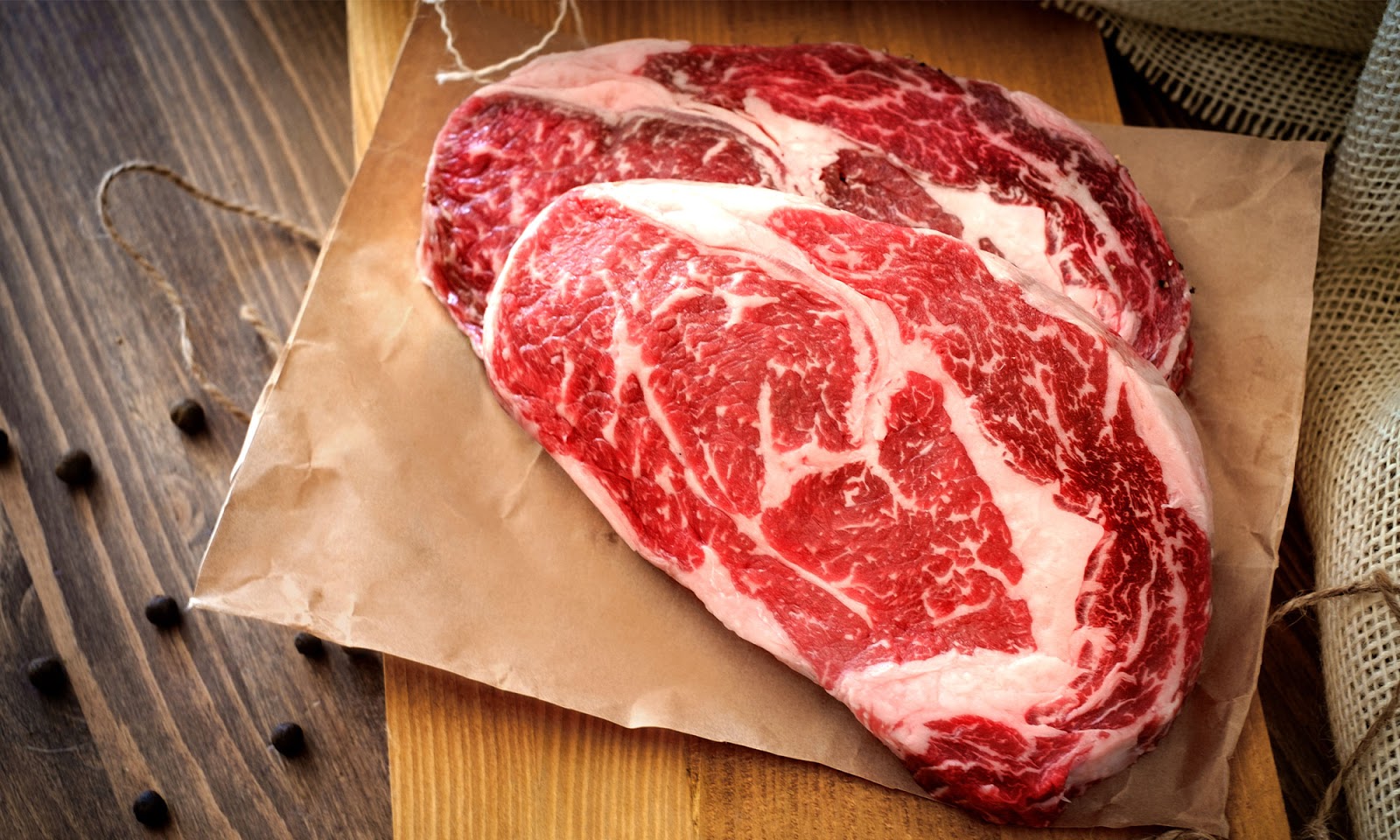A simple cut of beef with big flavor, the boneless ribeye steak is one of our customers’ favorites. And we have to agree, this tender, juicy cut is one of the best for a steakhouse dinner without ever leaving home. So, how do you get the most out of your organic boneless ribeyes? Follow these three tips (and stick around to the end of this article for our favorite recipe!).
Tip #1: Open Flame Is Your Friend
Ribeye steaks are probably best-known for their beautiful marbling. With its high fat content, this steak is well-suited to cook with intense heats (e.g. over an open flame) without drying out or getting rubbery.
When cooking over an open flame, it’s important to wait until your coals have burned down and are white-hot. Equally important is the distance between the grate you’ll be cooking on and the heat source. If they’re too close, you’ll burn the outside of your steaks before they’re cooked through. A good rule of thumb is to place your grate 2-6 inches above the hot coals.
Finally, don’t forget that the type of wood you use will directly affect the flavor of your finished steaks. We like to use hardwood like oak, hickory, or mesquite to build the fire when we know we’ll be cooking over it.
Tip #2: When It Comes to Seasoning Boneless Ribeyes, Keep It Simple
Ribeyes have a fat cap along the outside and will most often have a larger piece of fat in the middle. During the cooking process, this will all melt into the steak making it extra juicy and flavorful. Considering this, less truly is more when it comes to seasoning. In our opinion, you can get a restaurant-worthy steak with just a few simple ingredients and the right ribeye steak.
To truly savor the taste of this steak, all you need is a quick rub down with salt, pepper, and olive oil. Want to get fancy with it? Try using a seasoned salt. We’re big fans of everything Jacobsen Salt Co. has on offer.
Tip #3: For Perfectly Cooked Steaks, Invest in a Meat Thermometer
A good cook uses every tool at their disposal, and meat thermometers can be the difference between rich, mouthwatering flavors and an overcooked piece of meat. This is especially true when it comes to 100% grass-fed and finished beef, which can cook up to 30% faster than grain fed beef.
Of course, there’s always the Touch Test, but if you’re inexperienced cooking on an open fire (or even on the grill), a meat thermometer is a much better option for gauging doneness. For the appropriate internal temperature based on steak doneness, check out this helpful chart.
The Perfect Pan-Seared Boneless Ribeye Steak
Cooking on an open flame isn’t always an option! Don’t worry, we’ve got the perfect recipe for a skillet pan-seared ribeye.
Ingredients
- 2 Oreganic boneless ribeye steaks (1.25” thick)
- 2 tablespoons olive oil
- Salt & pepper, to taste
- 2 tablespoons butter (or herbed butter)
- Other herbs or seasonings, for example rosemary and thyme; note: you’ll add them to the skillet during cooking rather than using them as a rub
Instructions
- Remove steaks from the fridge at least 45 minutes before cooking
- Just before cooking, rub steaks with olive oil and generously season to taste
- Place a 10-to-12-inch cast-iron skillet* in the oven and heat the oven to 500 degrees F
- When the oven reaches temperature, remove the skillet and place on the range over high heat for 5 minutes
- After 5 minutes, place the steaks in the middle of the hot, dry skillet
- Cook 30 seconds without moving. Turn with tongs and cook another 30 seconds. If you’re adding herbs (fresh rosemary or thyme), add them to the skillet after flipping. Then put the pan straight into the oven for 2 minutes
- Flip the steak and cook for another 2 minutes, or until the steaks reach your desired level of doneness
- When steaks are cooked through to desired temperature, remove from the skillet, top with butter, and loosely tent with tinfoil for at least 5 minutes
- Once steaks have “rested,” it’s time to enjoy them! Serve with a fresh green salad, roasted vegetables, or your favorite side dish.
*Make sure you’re using an oven-safe skillet when cooking using this method! When we say cast iron, we mean it.
Oreganic’s Boneless Ribeye Steaks
Each Oreganic 100% grass-fed and finished USDA certified organic boneless ribeye steak is individually selected and cut from the prime rib. We proudly source all of our beef from our family ranch (Rocker 3 Ranch) located in Madras, Oregon. Order yours today to see what a difference sustainable ranching can make!









